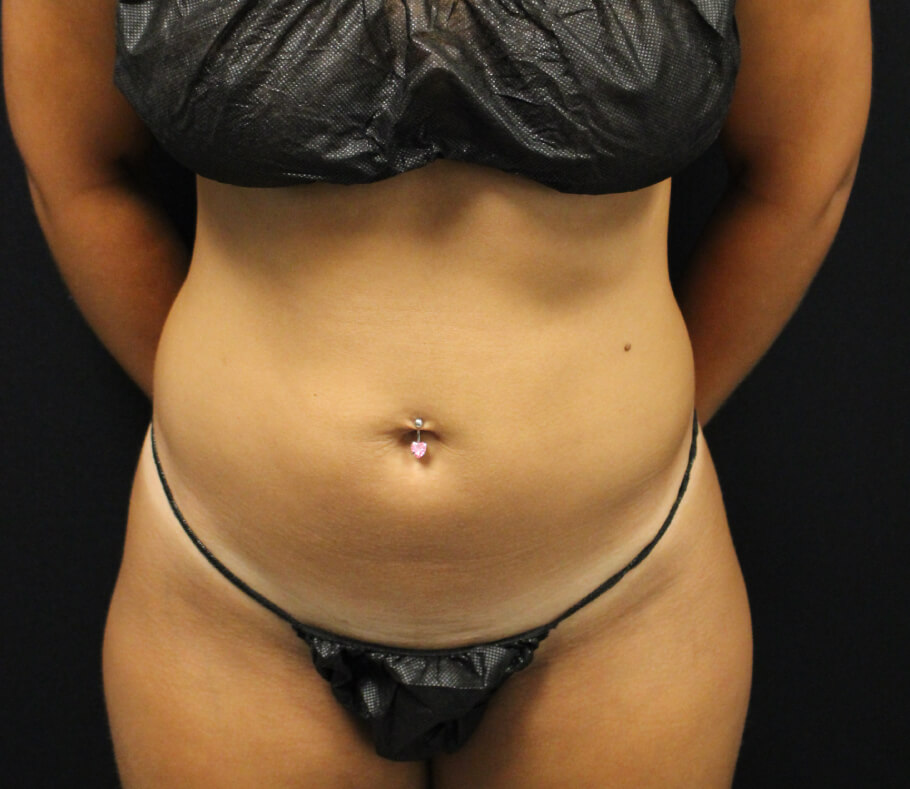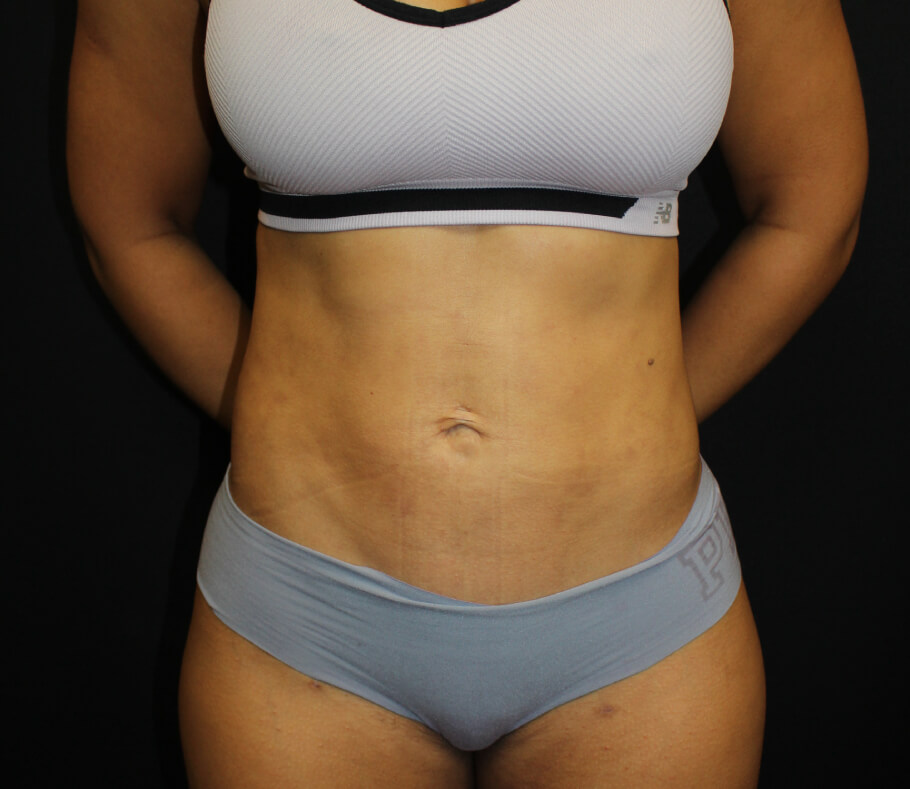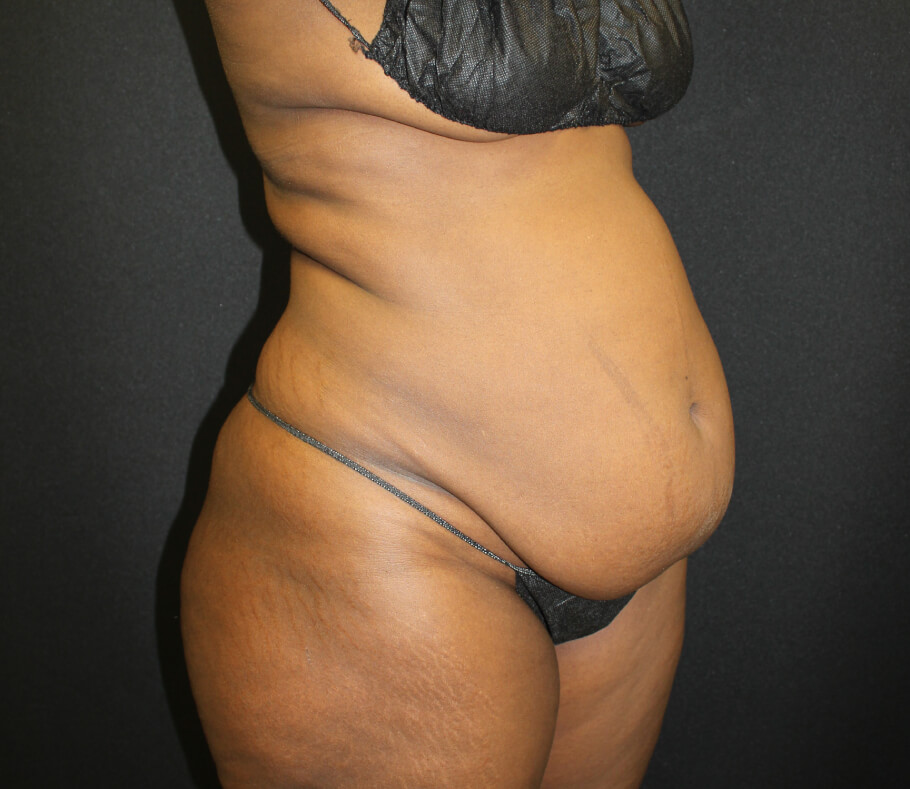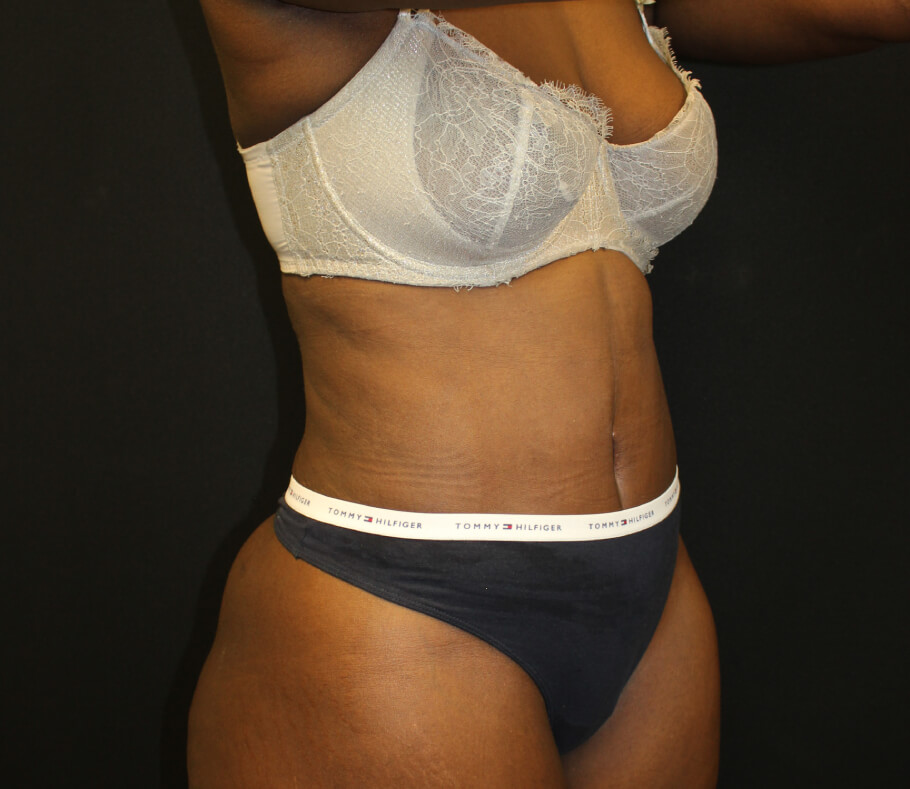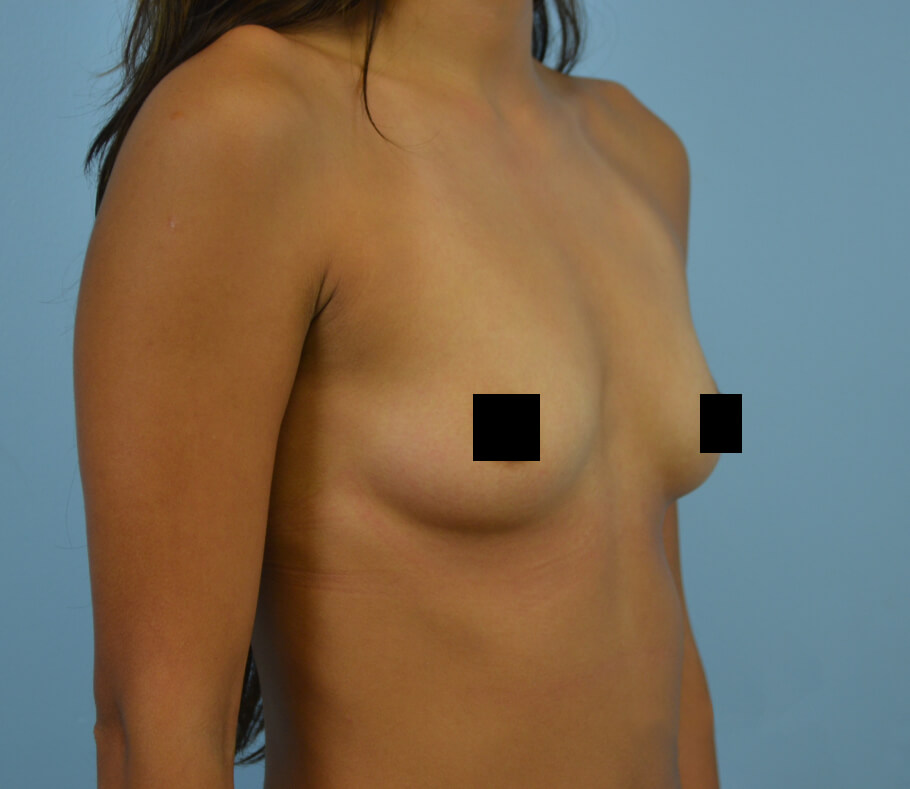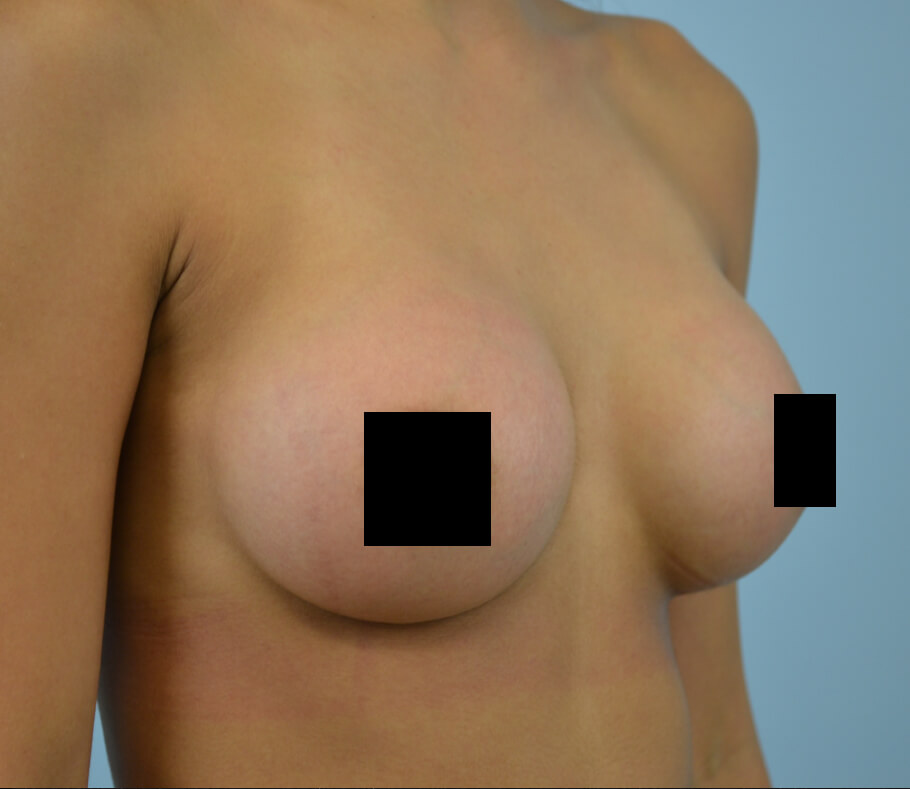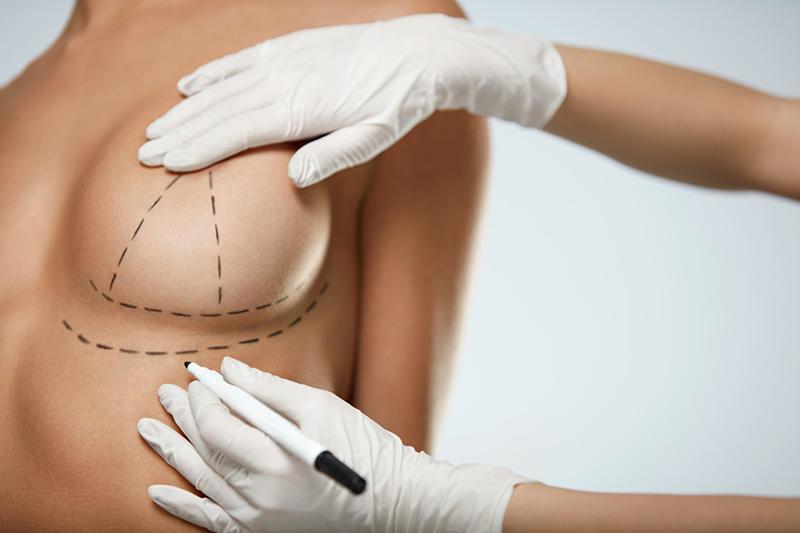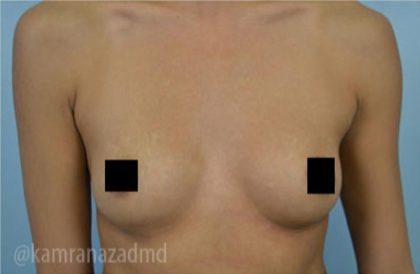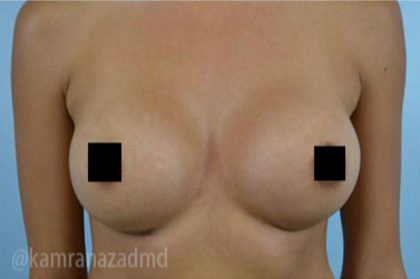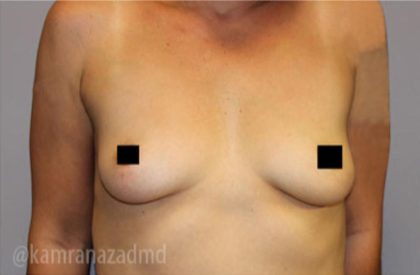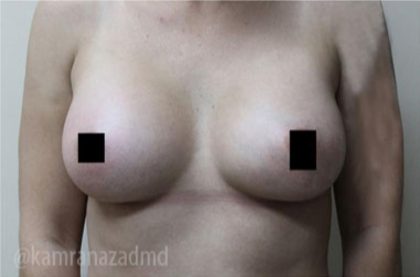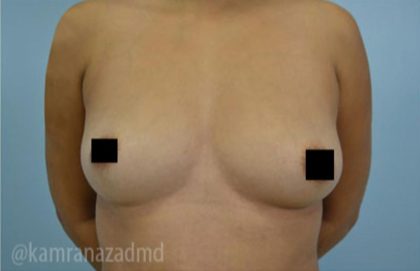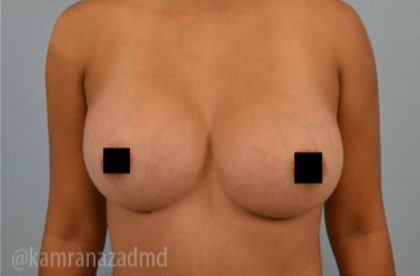After deciding on the type of breast implant you want and where you want the implant placement to be, the next step in customizing your breast augmentation, ‘boob job‘, is deciding what type of incision you would like to have. Incision placement is highly dependent on several factors such as your body type, the type of implants you will have, the size of implants you will have, whether you plan to breastfeed, and the appearance of the scar.
Before and After Photos
Breast Augmentation Incisions
There are three main incisions sites; transaxillary, an incision made in the armpit; periareola, an incision made around the nipple; and inframammary, an incision made in the breast fold, where the breast meets the chest wall. The fourth site is the transumbilical (TUBA), which is an incision made through the belly button, and can only be used for saline implants, however, I do not perform this type of procedure as it is not FDA approved for the placement of implants.
The transaxillary incision is the least common incision and is primarily used to place unfilled saline breast implants in a pocket created behind the breast. The incision is made under arm and a lighted endoscope is used to help tunnel through the subcutaneous fat to the breast. Though this method leaves the breasts looking untouched, achieving breast symmetry is more difficult and there is a slight risk of nerve damage.
The periareola incision is typically the most concealed, because the incision is made along the outer edges of the darker area of the areola. However, this method involves cutting through the breast tissue to get to the pocket for implant placement, possibly severing nerves and milk ducts. This increases the risk of change in nipple sensation and increases the likelihood of difficulty with breastfeeding. There is also a higher risk of capsular contraction, which is when scar tissue forms around the breast implants and causes the breasts to harden. There is a risk that if the scar does not heal well, the scar may appear raised or lighter color than the areola, a look that may be more obvious than one may prefer.
The inframammory incision is the most common type of incision and is hidden in the breast fold. Though this type of incision is less concealed than the periareola, a bra, bathing suit, and often the breast itself can hide the small 3-5cm scar. There is less risk of capsular contraction, and nerve damage. Also this incision allows for the most control over the placement of the implant meaning the results are more likely to be symmetric and consistent. I most often recommend the inframmamory incision for patients who have moderate breast fold allowing for the scar to be naturally concealed and for patients with small areolas looking to significantly increasing the size of the breasts.
If you have any questions about the procedure and would like to discuss your options more in depth or if you have any questions about surgery or want to request a consultation at Dr. Azad’s office in Orlando, please fill out the form below.
Contact
Please fill out this online form to request a consultation with Dr. Azad at our Orlando Plastic Surgery Office.
Dr. Kamran Azad looks forward to meeting with you to discuss your plastic surgery inquiries. You will find him and his entire staff at Azad Plastic Surgery to be pleasant, knowledgeable, and helpful. There is a reason why he is considered a top doc in Orlando and has hundreds of five-star reviews.
Dr. Kamran Azad is one of the few plastic surgeons in Central Florida, with additional aesthetic fellowship training. Performing procedures such as, Brazilian Butt Lift, Breast Augmentation, Tummy Tuck, Breast Lift, and Liposuction. Kamran Azad, MD will provide you with first class service and offer safe, sensible solutions for you. He’ll listen to your needs and answer all of your questions. Dr. Azad is Board Certified by the American Board of Plastic Surgery. He is an active member of the American Society of Plastic Surgery and the American Society of Aesthetic Plastic Surgery.
